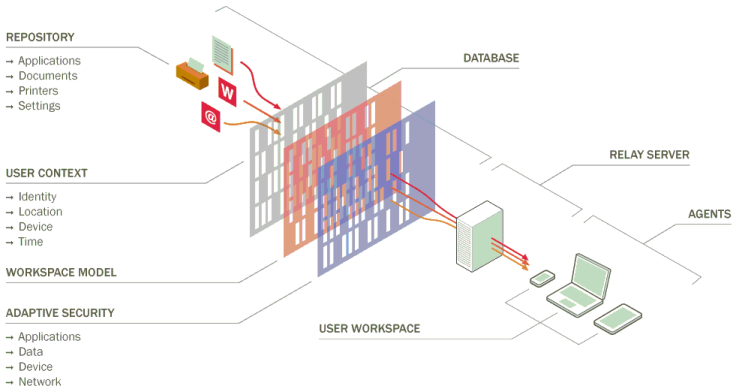This is not the latest version of Ivanti Workspace Control documentation.View available documentation.
About Workspace Control
On any regular Microsoft Windows desktop there are important items that enable productivity, such as the application to read e-mail, access to documents shared with other people, and the ability to print documents. There are also useful items on the desktop that make it more comfortable, such as personalized settings for using the e-mail application, a favorite background picture, or other preferences. These useful items do not directly affect productivity, but they make life easier.
Desktop items include:
- Applications
- Documents and other data
- Printing capabilities
- Personal settings
The availability of desktop items depends on the computer and the user account. Switching to a different computer or using a different user account does not guarantee you the same list of desktop items.
Workspace Control transforms desktops into User Workspaces.
A User Workspace is composed each time a user logs on to a Windows desktop. After composition, the desktop contains configured Applications, Data, Printer settings and Personal Settings. Composition of these items is dynamic and based on context: who you are (Identity), where you are (Location), what computer you are using (Device), and when (Date and Time). Composing and Securing a User Workspace takes a short time and is independent from any underlying technologies. Workspace Control allows you to manage this process easily for many user workspaces at once.
Once the unique User Workspace has been composed, it is secured simply and effectively by only allowing the use of the available Applications, Data, Devices and Network connections.
The User Workspace exists until the user logs off from the Windows desktop.

The navigation map contains links to the various nodes of the Console, which makes it easier to set up and manage the user workspace.